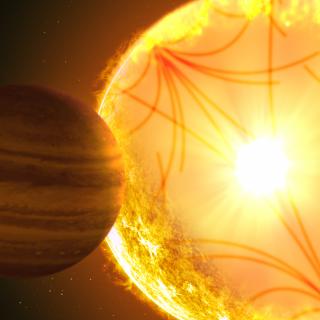Bibcode
Korth, Judith; Chaturvedi, Priyanka; Parviainen, Hannu; Carleo, Ilaria; Endl, Michael; Guenther, Eike W.; Nowak, Grzegorz; Persson, Carina M.; MacQueen, Phillip J.; Mustill, Alexander J.; Cabrera, Juan; Cochran, William D.; Lillo-Box, Jorge; Hobbs, David; Murgas, Felipe; Greklek-McKeon, Michael; Kellermann, Hanna; Hébrard, Guillaume; Fukui, Akihiko; Pallé, Enric; Jenkins, Jon M.; Twicken, Joseph D.; Collins, Karen A.; Quinn, Samuel N.; Šubjak, Ján; Beck, Paul G.; Gandolfi, Davide; Mathur, Savita; Deeg, Hans J.; Latham, David W.; Albrecht, Simon; Barrado, David; Boisse, Isabelle; Bouy, Hervé; Delfosse, Xavier; Demangeon, Olivier; García, Rafael A.; Hatzes, Artie P.; Heidari, Neda; Ikuta, Kai; Kabáth, Petr; Knutson, Heather A.; Livingston, John; Martioli, Eder; Morales-Calderón, María; Morello, Giuseppe; Narita, Norio; Orell-Miquel, Jaume; Osborne, Hanna L. M.; Palakkatharappil, Dinil B.; Pinter, Viktoria; Redfield, Seth; Relles, Howard M.; Schwarz, Richard P.; Seager, Sara; Shporer, Avi; Skarka, Marek; Srdoc, Gregor; Stangret, Monika; Thomas, Luis; Van Eylen, Vincent; Watanabe, Noriharu; Winn, Joshua N.
Referencia bibliográfica
The Astrophysical Journal
Fecha de publicación:
8
2024
Revista
Número de citas
19
Número de citas referidas
14
Descripción
We report the discovery and characterization of a small planet, TOI-1408 c, on a 2.2 day orbit located interior to a previously known hot Jupiter, TOI-1408 b (P = 4.42 days, M = 1.86 ± 0.02 M Jup, R = 2.4 ± 0.5 R Jup) that exhibits grazing transits. The two planets are near 2:1 period commensurability, resulting in significant transit timing variations (TTVs) for both planets and transit duration variations for the inner planet. The TTV amplitude for TOI-1408 c is 15% of the planet's orbital period, marking the largest TTV amplitude relative to the orbital period measured to date. Photodynamical modeling of ground-based radial velocity (RV) observations and transit light curves obtained with the Transiting Exoplanet Survey Satellite and ground-based facilities leads to an inner planet radius of 2.22 ± 0.06 R ⊕ and mass of 7.6 ± 0.2 M ⊕ that locates the planet into the sub-Neptune regime. The proximity to the 2:1 period commensurability leads to the libration of the resonant argument of the inner planet. The RV measurements support the existence of a third body with an orbital period of several thousand days. This discovery places the system among the rare systems featuring a hot Jupiter accompanied by an inner low-mass planet.
Proyectos relacionados

Sismología Solar y Estelar y Búsqueda de Exoplanetas
Los objetivos genéricos de este Proyecto son: 1) el estudio de la estructura y dinámica del interior solar, 2) la extensión de dicho estudio al caso de otras estrellas, 3) la búsqueda y caracterización de planetas extrasolares por métodos fotométricos (principalmente mediante el método de tránsitos) y espectroscópico (variaciones en la velocidad
Savita
Mathur

Exoplanetas y Astrobiología
La búsqueda de vida en el Universo se ha visto impulsada por los recientes descubrimientos de planetas alrededor de otras estrellas (los llamados exoplanetas), convirtiéndose en uno de los campos más activos dentro de la Astrofísica moderna. En los últimos años los descubrimientos cada vez más numerosos de nuevos exoplanetas y los últimos avances
Enric
Pallé Bago